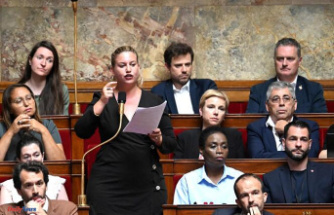Garbage is becoming an ever-growing problem. For this reason, ideas are needed on how to reuse the leftovers. In Ghent, a new, promising path is being taken for the new building of the design museum.
Rubbish for walls: Researchers and designers from Belgium and England have developed a sustainable brick made from regional waste. It is to be used in the construction of a new building for the Design Museum in Ghent, Belgium. The building material consists of 63 percent regional waste.
The project started about a year and a half ago, explained the museum spokeswoman Bie Luyssaert. The lime-based facade brick was specially developed to reduce CO2 emissions during the construction of the new museum building. For the production, waste such as crushed concrete, white glass and lime was collected from the region and pressed into the desired shape and size in a production facility in Ghent, according to the museum's statement. Due to the simple production process, the principle can easily be transferred to other urban environments.
The brick is not fired in an oven as is usual, but pressed and then dried in the fresh air. This means that no additional heat is required and the production of the building material is particularly environmentally friendly. Due to the special manufacturing process and the recycled waste, only a third of the CO2 is caused compared to conventional bricks.
The brick gets its strength from so-called carbonization. The lime in the bricks binds CO2 from the atmosphere when it hardens and in this way stores carbon, explained Luyssaert. The bound carbon provides strength and resilience, making the bricks ready for outdoor use.
The conventional production of bricks has a high energy consumption due to the high temperatures between 800 and 1000 degrees in the firing process, explains Felix Pakleppa, General Manager of the German Construction Industry Association. That is why bricks can be made more sustainable with an optimized combustion process, for example with green energy.
The addition of recycling material is also an option to reduce the consumption of resources. Because drying in fresh air instead of in the oven, the expert suspects that the bricks have a lower resilience and that there are possible risks in the statics of buildings. "However, the use of cladding, i.e. non-static elements, could be possible," explains the expert.
Ken De Cooman, who was involved in the research project, sees the waste brick in other construction projects in the future. Because the brick contributes to decarbonizing the construction of buildings - i.e. reducing carbon emissions - and favoring the use of local waste streams and degraded resources, the researcher explained. "Due to the conservation of resources alone, we will have to think and plan more and more in cycles in the future and continue to use existing materials as far as possible," explained Pakleppa.












